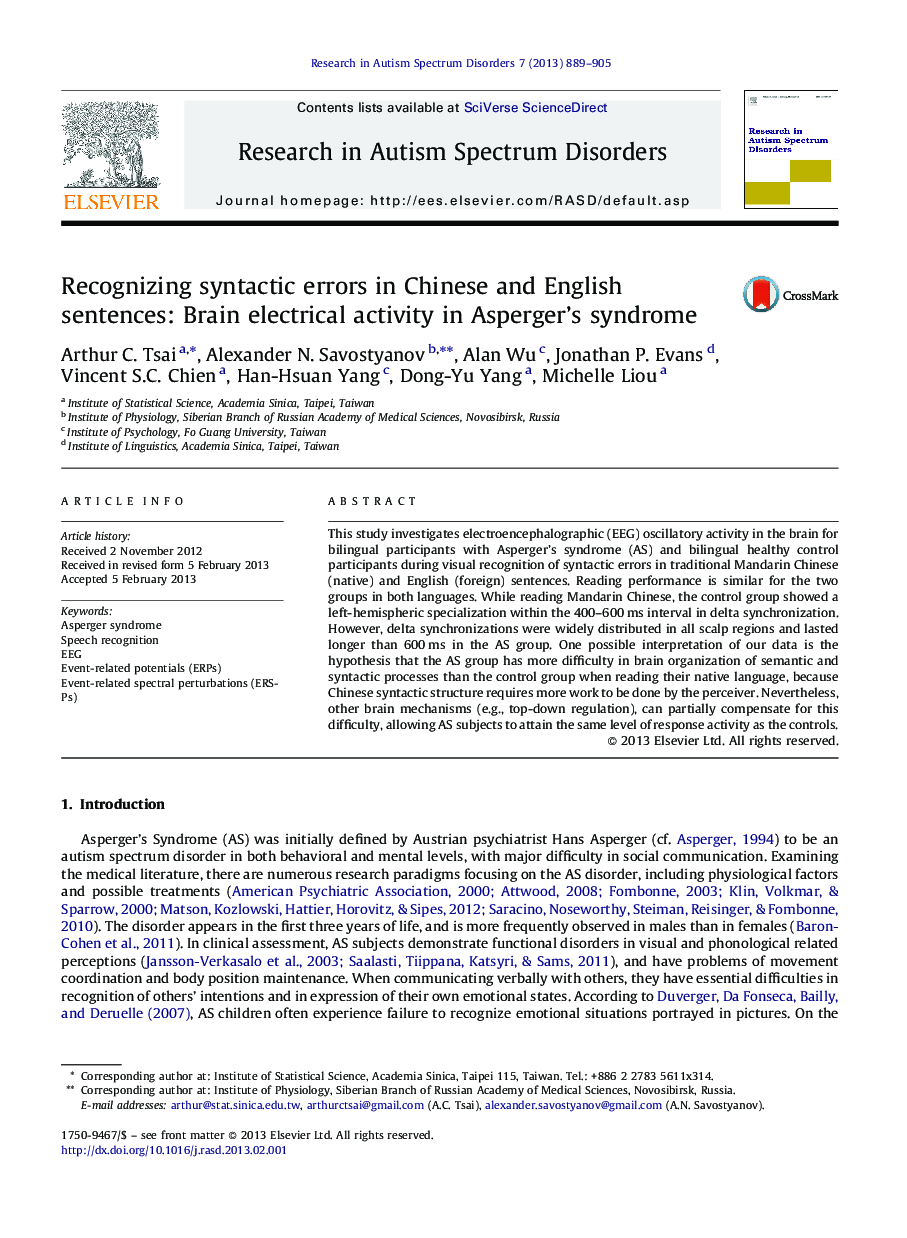| Article ID | Journal | Published Year | Pages | File Type |
|---|---|---|---|---|
| 370394 | Research in Autism Spectrum Disorders | 2013 | 17 Pages |
This study investigates electroencephalographic (EEG) oscillatory activity in the brain for bilingual participants with Asperger's syndrome (AS) and bilingual healthy control participants during visual recognition of syntactic errors in traditional Mandarin Chinese (native) and English (foreign) sentences. Reading performance is similar for the two groups in both languages. While reading Mandarin Chinese, the control group showed a left-hemispheric specialization within the 400–600 ms interval in delta synchronization. However, delta synchronizations were widely distributed in all scalp regions and lasted longer than 600 ms in the AS group. One possible interpretation of our data is the hypothesis that the AS group has more difficulty in brain organization of semantic and syntactic processes than the control group when reading their native language, because Chinese syntactic structure requires more work to be done by the perceiver. Nevertheless, other brain mechanisms (e.g., top-down regulation), can partially compensate for this difficulty, allowing AS subjects to attain the same level of response activity as the controls.
► EEG activity in syntax recognition is stronger in reading Chinese than English. ► This effect is significantly greater in the Asperger's Syndrome (AS) than controls. ► For AS, additional top-down activation is observed in frontal in Chinese reading. ► This activation with EEG slow-wave reflects a strong level of attentional focus. ► Results support that AS individuals can cope with disorders by focusing on details.
